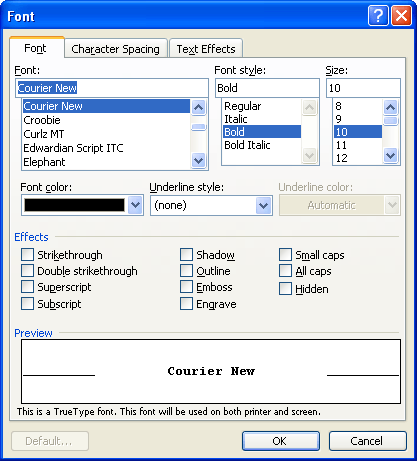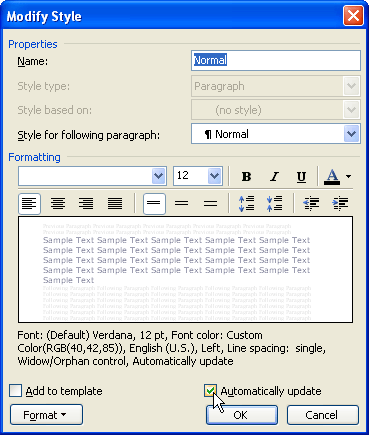Please Note: This article is written for users of the following Microsoft Word versions: 97, 2000, 2002, and 2003. If you are using a later version (Word 2007 or later), this tip may not work for you. For a version of this tip written specifically for later versions of Word, click here: Changing the Default Font.
Written by Allen Wyatt (last updated April 23, 2019)
This tip applies to Word 97, 2000, 2002, and 2003
When you create a new document, Word bases what that document looks like on certain defaults that it establishes. Where those defaults come from depends on the version of Word you are using. In Word 97 and Word 2000 all defaults were stored in the default template, which is Normal.dot. (More on default templates in a moment.)
In later versions of Word, more and more defaults have been moved away from templates and into the Windows Registry. The default font used by the program is no exception. In these later Word versions, there is no default template until you make enough changes to Word's defaults to warrant the creation of the template.
If you are using Word 2002 or Word 2003 you can change the default font used for new documents in this manner, assuming that Word has not yet created the default template (Normal.dot):

Figure 1. The Font dialog box.
If Word has already created the default template (again, Normal.dot) then the best way to change the default font is to make your change to the template itself. Follow these steps:

Figure 2. The Modify Style dialog box.
If you are using an older version of Word (Word 2000 or Word 97) then you need to make your default change to the template itself by using these steps:
You have now changed the default template. You should save the file and then close it. The changes will take effect with the next document you create.
WordTips is your source for cost-effective Microsoft Word training. (Microsoft Word is the most popular word processing software in the world.) This tip (1559) applies to Microsoft Word 97, 2000, 2002, and 2003. You can find a version of this tip for the ribbon interface of Word (Word 2007 and later) here: Changing the Default Font.

Create Custom Apps with VBA! Discover how to extend the capabilities of Office 365 applications with VBA programming. Written in clear terms and understandable language, the book includes systematic tutorials and contains both intermediate and advanced content for experienced VB developers. Designed to be comprehensive, the book addresses not just one Office application, but the entire Office suite. Check out Mastering VBA for Microsoft Office 365 today!
If you have problems with strange fonts showing up when you paste information into a document, it is helpful to ...
Discover MoreIf you need to apply a common formatting change to all the headings in your document, a quick way to do it is to use the ...
Discover MoreWhen laying out your document, you may want to use a text box that appears to be positioned over your text, but to be ...
Discover MoreFREE SERVICE: Get tips like this every week in WordTips, a free productivity newsletter. Enter your address and click "Subscribe."
There are currently no comments for this tip. (Be the first to leave your comment—just use the simple form above!)
Got a version of Word that uses the menu interface (Word 97, Word 2000, Word 2002, or Word 2003)? This site is for you! If you use a later version of Word, visit our WordTips site focusing on the ribbon interface.
Visit the WordTips channel on YouTube
FREE SERVICE: Get tips like this every week in WordTips, a free productivity newsletter. Enter your address and click "Subscribe."
Copyright © 2025 Sharon Parq Associates, Inc.
Comments